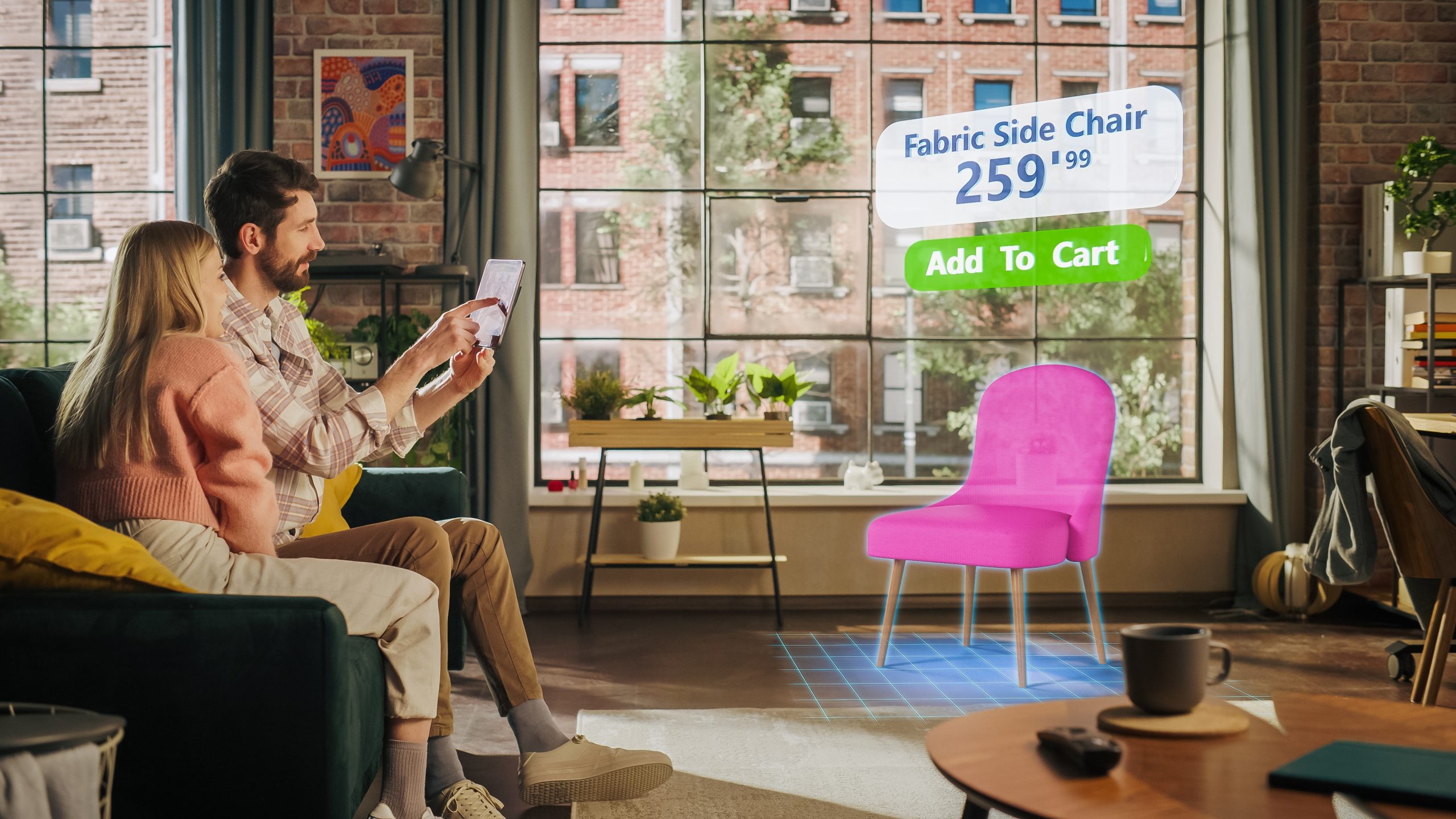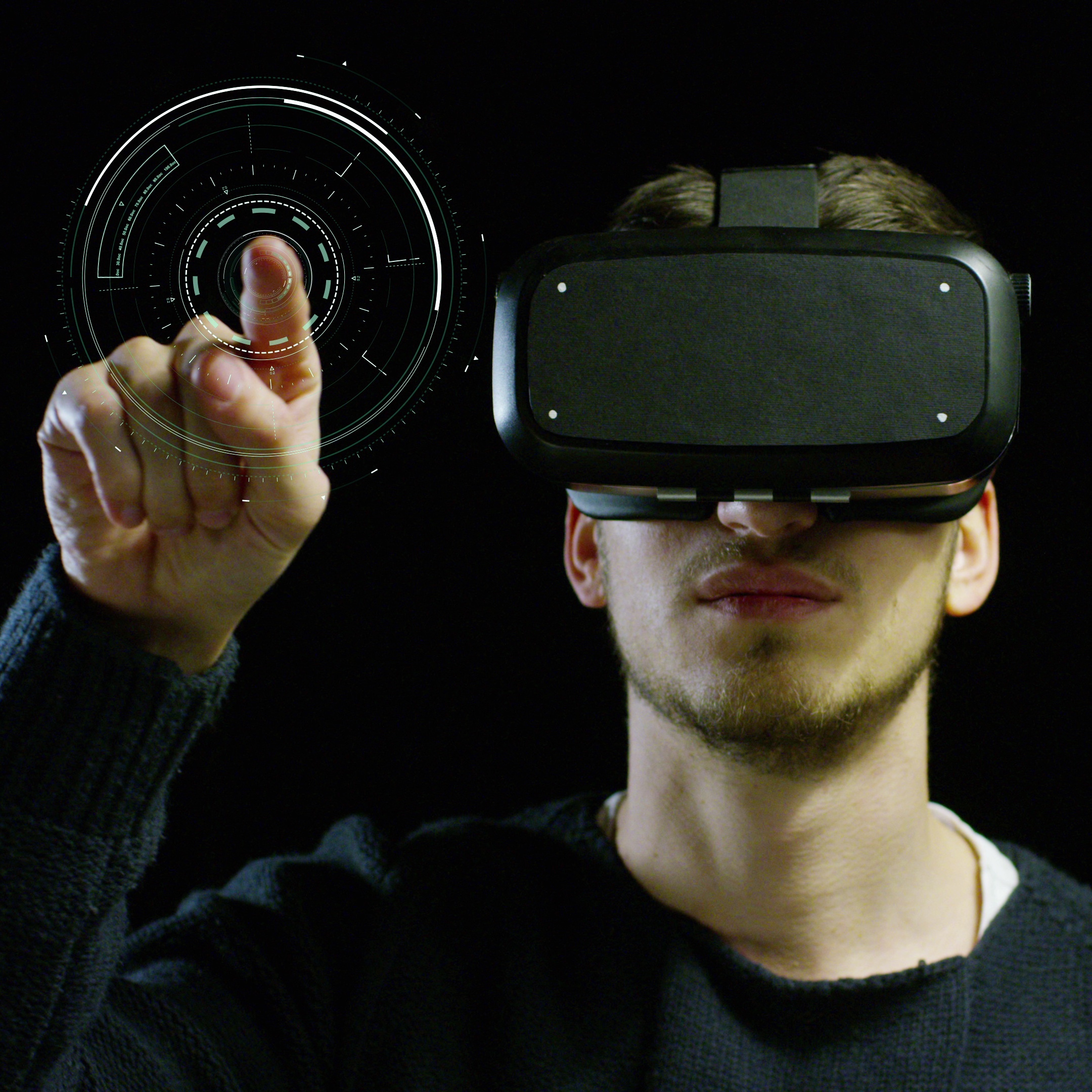Augmented Reality: Redefining Customer Interactions and Brand Experiences
Gone are the days when AR was merely a fascinating concept in sci-fi narratives or a sophisticated tool for a tech-savvy few. Today, Augmented Reality stands as a dominant player in the digital landscape, forging new paths in how businesses operate, and consumers engage with brands.
Initially conceptualized as an innovation to boost gaming experiences, AR has now permeated various sectors, offering an innovative lens to look at and interact with the world around us. By superimposing digital information onto our physical environment, AR enhances our perception of reality, creating immersive experiences that are both engaging and informative.
The global AR market, valued at over $31 billion, is far from being a niche technology. The monumental rise in its acceptance and application over the years has proven its worth, not just as a technological marvel, but as a transformative tool that’s redefining customer interactions and brand experiences. From trying on a pair of sneakers virtually to visualizing how a new couch fits in your living room, AR is transforming the face of customer engagement in unprecedented ways.
By 2028, the AR market is projected to reach a staggering $340 billion, indicative of the substantial influence it’s set to have on business operations across industries. This blog explores how AR is not just augmenting reality but also shaping it in many ways. So let’s dive right in.
AR in Action: Noteworthy Applications and Success Stories
While AR has found a place across many industries, some notable instances stand out, shedding light on how AR fundamentally reshapes the digital landscape.
Consider Magic Leap, a significant player that has attracted over $2.6 billion in funding primarily for its AR glasses. A leap beyond conventional augmented reality, their creations have pioneered new possibilities, revolutionizing how we interact with our surroundings and marking Magic Leap as a significant player in the AR space.
Magic Leap One and NBA – A Game-Changing Partnership
Magic Leap’s most striking application comes to life in its partnership with the NBA. Together, they embarked on a mission to reinvent how basketball games are consumed. The NBA, employing Magic Leap One (Magic Leap’s flagship AR headset), superimposed AR enhancements onto live games, presenting viewers with an immersive, multi-layered experience.
Fans found themselves not just watching the game but also accessing real-time player stats, slow-motion replays, and various data points, all displayed within their living rooms. This AR-infused viewing experience offered unprecedented levels of engagement, contributing to a significant upsurge in viewership and game participation.
The swift embrace of AR across a spectrum of industries clearly shows its growing significance. From 2019 to 2020, there was a significant 15% surge in AR adoption across sectors, signaling an evolving digital landscape.
Companies in diverse fields, including retail, healthcare, and education, deploy AR to reshape customer interactions, streamline processes, and improve service offerings. This trend highlights a shift in digital strategies as businesses increasingly recognize AR as a key tool in their arsenal that sets them apart in a crowded market.
AR’s Impact on Mobile Ecosystem: Applications and Games
A critical domain where AR is creating significant waves is within the mobile ecosystem, morphing conventional app experiences into engaging, interactive journeys.
According to data, the Mobile AR market is projected to achieve an impressive valuation of $21 billion by 2023, underscoring its pervasive influence. However, it’s not just about the numbers; the real impact of AR in the mobile domain lies in the value it brings to user experiences and engagement strategies.
AR Transforming Mobile Apps
To comprehend the profound effect of AR, consider the current landscape of mobile applications. Traditionally, these platforms were mostly 2D interfaces, with users engaging relatively passively. With AR, mobile apps have become immersive environments where users actively interact with digital overlays of their real-world surroundings.
For instance, retail capitalizes on AR to redefine online shopping experiences. Apps now offer features where consumers can virtually ‘try-on’ clothes or visualize how furniture would fit within their homes, thereby making informed purchases. Similarly, the real estate industry is introducing AR-based virtual tours, letting potential buyers or tenants explore properties without leaving their current location.
The value here is twofold – AR amplifies user engagement and provides practical solutions to bridge digital-physical gaps, enhancing decision-making processes.
Pokémon Go: A Case of AR’s Far-reaching Influence
No discussion about AR’s impact on the mobile ecosystem can be complete without mentioning Pokémon Go, the AR-integrated game that became a global phenomenon. Grossing an estimated $1 billion within just six months of release, it demonstrated the potential of AR to captivate users by amalgamating their digital and physical realities seamlessly.
However, the success of Pokémon Go is more than just a blockbuster gaming story; it represents a pivotal moment in how AR garnered mass consumer acceptance. It made AR technology tangible and accessible to common users, proving that AR can significantly enhance user engagement when integrated into familiar digital experiences.
The E-commerce Revolution: AR and the Virtual Shopping Experience
As revealed by a survey conducted by Dynata, over 90% of Generation Zs demonstrated interest in AR-enhanced shopping experiences. This isn’t surprising, considering AR offers a unique and immersive digital experience, allowing customers to interact with products more tangibly. Consumers can now virtually ‘try on’ clothes, ‘place’ furniture in their living spaces, or even experiment with different hair shades as Amazon Salon offers, all contributing to an enhanced online shopping experience.
For instance, fashion retailer ASOS has effectively utilized AR technology to ‘digitally fit’ clothing onto models, showcasing how products look on different body types and sizes. This innovative approach resolves the pressing issue of updating new inventory and enhancing customer experience, driving sales and reducing returns.
Similarly, Gucci introduced an AR feature allowing users to ‘try on’ sneakers virtually. They recently released ‘digital-only’ trainers, intended to be worn and shared exclusively online, an unprecedented move towards ‘digital fashion’.
AR and Inventory Control: Walmart’s Game Changer
Beyond enhancing customer experiences, AR is also making strides in reshaping logistical operations, particularly inventory control. Retail giant Walmart transformed four of its physical stores into ‘test stores’ to try out new technologies, including AR, aiming to speed up product transport from the backroom to the sales floor. The technology allowed employees to identify the boxes ready for transportation, leading to a more seamless and faster workflow. This innovative use of AR ultimately resulted in significant operational efficiencies, saving Walmart an impressive $30 million.
Brands Exploring AR
Several brands recognize AR’s potential by exploring new avenues to engage customers. Burberry, for instance, launched an AR pop-up experience in Harrods to coincide with their new Olympia bag’s release. The AR tool City Painter introduced by Snap offers a shared AR experience where users can virtually spray paint London’s Carnaby Street shops. IKEA‘s design lab, Space10, took the brand’s AR offering higher by enabling users to capture and redesign entire 3D room plans.
Even within the gaming industry, retail brands like Pull & Bear are making a foray with their AR game, ‘Pacific Game’, reaching out to a significant segment of Gen Z gamers.
The Future: Shared Virtual Worlds and Digital Fashion
The retail industry’s adoption of AR technology is moving towards creating shared virtual worlds and digital fashion. The focus is on providing a platform for trying out products virtually and building an immersive AR ecosystem where customers can share and interact with each other in real time. The rise of virtual influencers and AR filters on social media facilitates the trend toward digital fashion, where luxury brands like Gucci release digital-only products.
Harnessing AR for Next-Level Brand Experiences
Augmented Reality and Video Content
Brands use AR to captivate audiences and tell compelling stories; Snapchat is a prime example. The social media giant has skillfully leveraged AR to develop engaging filters, turning ordinary snaps into memorable experiences. It has thereby successfully enriched user interactions and brand engagement on its platform.
Similarly, Pepsi launched an innovative AR-based marketing campaign that blurred the lines between the virtual and physical worlds. The brand created an immersive video experience using AR, creating a futuristic bus shelter in London where consumers experienced virtual alien invasions, prowling tigers, and robots up close. The campaign successfully created buzz, brought smiles to people’s faces, and resonated well with their target demographic.
AR for Interactive Packaging
AR is revolutionizing product packaging by transforming it into an interactive user experience. Brands are embedding QR codes on their packaging, which, when scanned, open up AR experiences. This offers a unique way to provide additional product information, usage instructions, or engaging content, thereby adding value beyond the physical product.
Boosting Customer Service with AR
AR is enhancing customer service by providing visually engaging and interactive solutions. Companies like Hyundai and Toyota use AR to simplify complex customer processes. For instance, these automakers use AR to show customers how to use intricate vehicle features, making technical information easily understandable and accessible. Similarly, Lowe‘s has an in-store navigation app that uses AR to guide customers around their large stores, significantly enhancing the shopping experience.
AR for ‘Try-Before-You-Buy’ Options
AR also creates avenues for customers to ‘try before they buy’, notably in the cosmetics and apparel industries. Sephora’s Virtual Artist App uses AR to allow users to virtually try on different makeup products. This gives consumers the confidence to purchase products without physically testing them, knowing they’ll likely be satisfied with their choice. Similarly, apparel brands are implementing AR to enable virtual fittings, which can reduce return rates and improve customer satisfaction.
AR for Immersive Shopping Experiences
AR technology is creating immersive shopping experiences that are engaging and interactive. For example, the Starbucks flagship store in Shanghai has integrated AR to enhance customers’ coffee-drinking experience. Customers can use their phones to learn about the coffee brewing p
process and Starbucks’ history as they move around the store.
On a larger scale, Alibaba has created 1,000 virtual 3D Yihaodian grocery stores across China. Customers can walk through these stores with their smartphones, select products off virtual shelves, and make purchases within the AR environment. This unique shopping experience mixes the convenience of online shopping with the tangibility of physical retail, redefining the future of shopping.
Closing thoughts
As we delve deeper into the possibilities of Augmented Reality, it becomes increasingly clear that we are only scratching the surface of its potential. The impact of AR on customer interactions and brand experiences has been substantial, reshaping industries and challenging traditional norms. But what lies ahead is even more exciting.
The future of AR holds limitless opportunities for brands and businesses to create truly immersive and captivating experiences. Shared virtual worlds, digital fashion, and experiential centers are just glimpses of what awaits us. The fusion of cutting-edge technology, powerful storytelling, and thoughtfully designed spaces will redefine how brands engage with their audience.
magineu‘s Experience Studio stands at the forefront of innovation in this ever-evolving landscape. With a focus on creating high-impact, high-touch experiences, Magineu combines the latest technology with meticulous craftsmanship to craft immersive contexts where brands and products come alive with the power of possibility.
To learn more, connect with us today.



